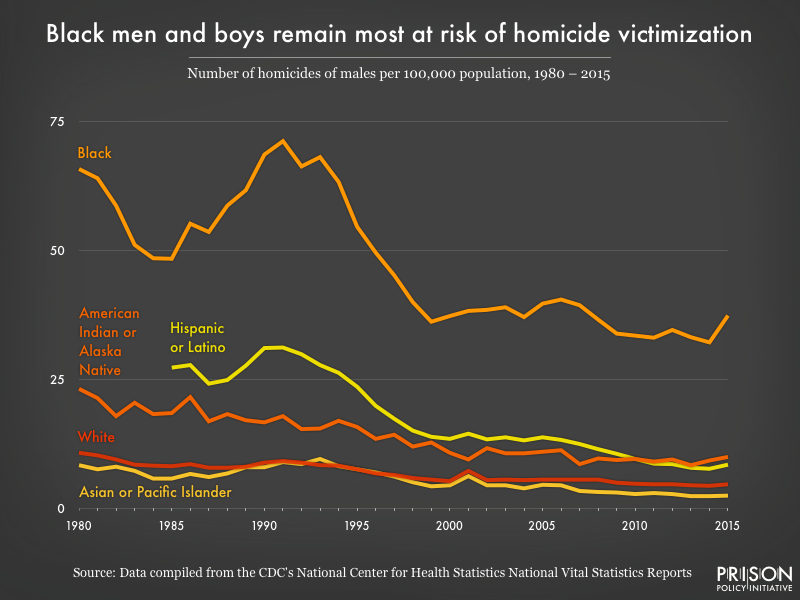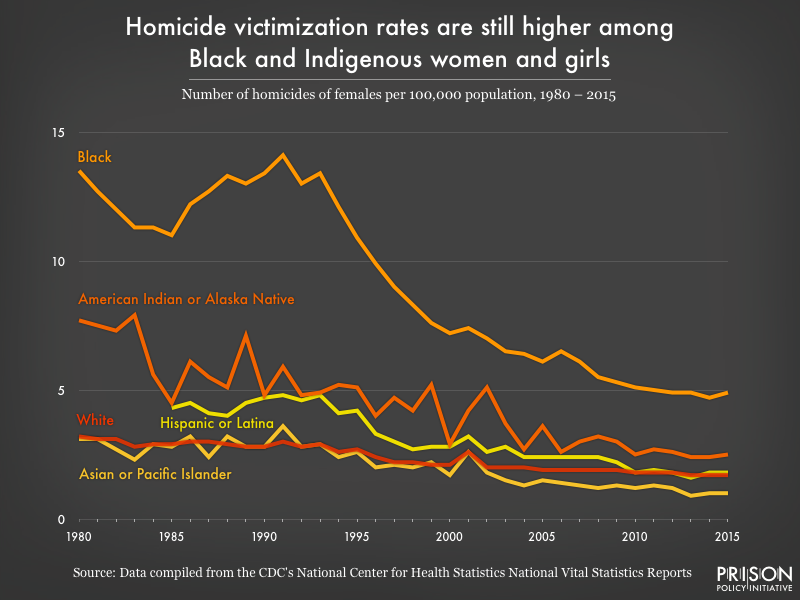Stark racial disparities in murder victimization persist, even as overall murder rate declines
Homicide victimization rates for Black men, Black women and Indigenous women are consistently higher than for other racial and ethnic groups.
by Emily Widra, May 3, 2018
I wanted to compare homicide victimization across racial, ethnic, and gender groups over time, since this data is deceptively difficult to find in one place.
In the process, I found that the murder victimization rate for Black men is consistently higher than the rates for men of all other racial and ethnic groups have ever been:
 Despite a drop in overall murder rates, the racial disparities in male murder victimization rates have persisted.
Despite a drop in overall murder rates, the racial disparities in male murder victimization rates have persisted.
Controlling for gender reveals more complexity. For example, the rate of homicide of Indigenous women is higher than the rate of homicide for Hispanic and Latina women, whereas the opposite is true for their male counterparts:
 Overall, Black, Hispanic or Latinx, and American Indian and Alaskan Native people are murdered at much higher rates than their white or Asian and Pacific Islander counterparts.
Overall, Black, Hispanic or Latinx, and American Indian and Alaskan Native people are murdered at much higher rates than their white or Asian and Pacific Islander counterparts.
Overall murder rates have been declining since 1980, when the total rate for murder and non-negligent manslaughter was 10.2 per 100,000 people. But the disproportionately high rate at which Black Americans are murdered should still concern lawmakers, reporters, and the public.
Unfortunately, conversations about about this problem often fall back on the assumption that violence in Black communities has cultural — or even biological — roots. But these assumptions aren’t supported by data.
For instance, Krivo and Peterson’s analysis of crime data in Columbus, Ohio shows that economic disadvantage, not race, is the strongest predictor of violence in a particular neighborhood. “In fact,” they conclude, “violent crime rates for extremely disadvantaged white neighborhoods are more similar to rates for extremely disadvantaged black areas than to rates for other types of white neighborhoods.”
Studies like these suggest that racial disparities in murder rates stem from a variety of structural causes, most notably economic inequality. (To dig deeper, see Krivo and Peterson’s study controlling for neighborhood disadvantage, as well as the Violence Policy Center’s recent study of Black homicide victimization.)



